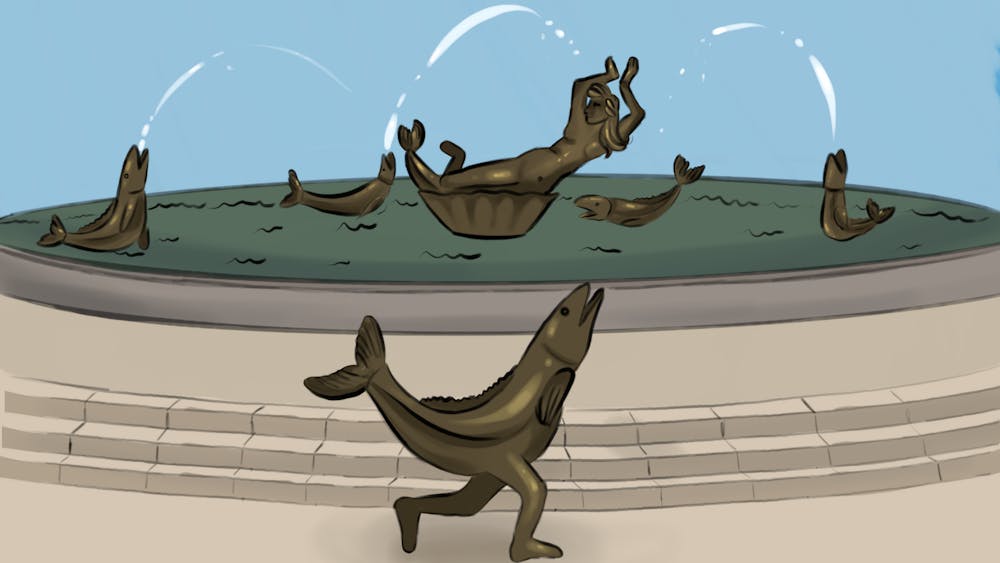Since an Indiana law banning texting while driving was passed six months ago, Bloomington Police Department Cpt. Joseph Qualters said BPD has not issued a single citation for the offense.
Though Qualters said texting and driving and other distractions in the driver’s seat are problems worth preventing, he said Indiana’s current law is inadequate for
enforcement.
But the National Transportation Safety Board is calling for states to adopt laws banning cell phone use while driving altogether, which could make enforcement easier.
Officers can enforce Indiana’s no-texting law only if the violation is observed. However, Qualters said the law is difficult to enforce because officers are unable to prove the motorist was sending or receiving a text message. A police officer cannot seize a portable electronic device to check if the driver was texting.
“It would seem that restricting any use of a device while operating a vehicle would make enforcement much easier,” Qualters said in an email. “It would take the ‘guesswork’ out of it by not requiring the officer to determine how the device was being used and whether that use is an ‘exception’ to whatever legislation is in place.”
The safety recommendation, issued by the NTSB in December 2011, specifically calls for the 50 states and the District of Columbia to ban the non-emergency use of portable electronic devices for all drivers other than devices specifically designed to support the driving task.
The NTSB’s recommends banning hands-free devices other than those installed in the vehicle by the manufacturer.
Qualters said he anticipates that even emergency calls could cause enforcement tribulations unless an “emergency” is defined.
“Someone having a medical issue would clearly constitute an emergency to most of us,” Qualters said. “To others, checking to make sure their child arrived home safely from school might be an ‘emergency’ in their minds, and that’s where issues with any exceptions make it difficult for enforcement if those exceptions aren’t clearly defined.”
The NTSB recommendation is the result of a board meeting discussion about an August 2010 multi-vehicle highway accident in Gray Summit, Mo., where a pickup truck ran into the back of a truck-trailer that slowed for an active construction zone.
The pickup truck was then struck from behind by two school buses, resulting in two fatalities and 38 injuries.
The pickup driver sent and received 11 text messages in the 11 minutes preceding the accident, an NTSB investigation revealed. The last text was received moments before the pickup struck the truck-trailer.
But this is not the only accident resulting in fatalities because of texting while driving. According to the National Highway Traffic Safety Administration, more than 3,092 people lost their lives last year in distraction-related accidents.
In Indiana, 2,134 personal injury crashes attributed to distracted driving were recorded in 2010, Indiana State Police Sgt. John Bowling said. Nineteen crashes resulted in a fatalities.
As of Dec. 29, 2011, Bowling said 51 tickets and 49 warnings were issued in
Indiana for texting while driving since the law took effect July 1, 2011.
Currently, 34 states have laws that ban texting while driving. Nine more states and the District of Columbia ban handheld cell phone use while driving.
But, in Indiana, cell phone use is still legally acceptable.
“The bottom line is this: Driving requires your full attention to ever-changing conditions,” Qualters said. “That includes adjusting to the poor driving habits of others. And anything that can be done to save lives would seem to be the right thing to do.”
During the last few years, Bloomington residents have expressed concerns to Bloomington City Council Pres. Timothy Mayer regarding cell phone use while driving.
Mayer said he has observed motorists using their phones, even texting, while behind the wheel.
“If you drive and you observe other drivers while they’re driving, it’s awfully scary sometimes,” Mayer said. “You’ll be sitting at a light, for example, you’re three cars back, the light turns green, and the car in front of you doesn’t go. And you know the person in front of you is on their phone. So it’s not a good idea to be on the phone while you drive. That’s the bottom line.”
He said the city has not taken direct control of the issue to develop a city ordinance.
“The state legislature is working on it and doing the best that they possibly can, so that kind of takes the pressure off of localities,” Mayer said.
“Even though we might have the opportunity to, it takes the pressure off because then the public has seen that the issue is being addressed.”
Enforcement of state texting ban unsuccessful in Bloomington
Federal agency seeks full ban on cell phones while driving, BPD has not issued a single citation for the offense
Get stories like this in your inbox
Subscribe





